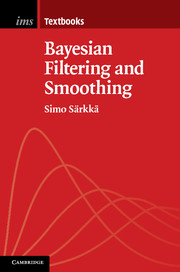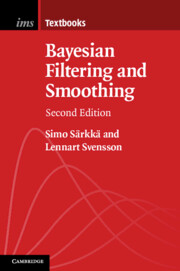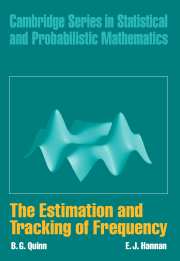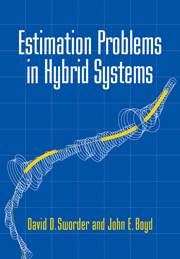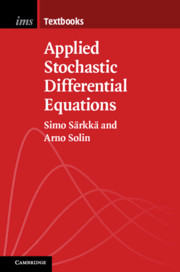Bayesian Filtering and Smoothing
Filtering and smoothing methods are used to produce an accurate estimate of the state of a time-varying system based on multiple observational inputs (data). Interest in these methods has exploded in recent years, with numerous applications emerging in fields such as navigation, aerospace engineering, telecommunications and medicine. This compact, informal introduction for graduate students and advanced undergraduates presents the current state-of-the-art filtering and smoothing methods in a unified Bayesian framework. Readers learn what non-linear Kalman filters and particle filters are, how they are related, and their relative advantages and disadvantages. They also discover how state-of-the-art Bayesian parameter estimation methods can be combined with state-of-the-art filtering and smoothing algorithms. The book's practical and algorithmic approach assumes only modest mathematical prerequisites. Examples include Matlab computations, and the numerous end-of-chapter exercises include computational assignments. Matlab code is available for download at www.cambridge.org/sarkka, promoting hands-on work with the methods.
- The first book to draw together estimation, smoothing and Monte Carlo methods
- Examples and exercises demonstrate practical use of the algorithms
- Matlab code is available for download, allowing readers hands-on work with the methods
Product details
October 2013Hardback
9781107030657
254 pages
234 × 157 × 17 mm
0.54kg
55 b/w illus. 60 exercises
Temporarily unavailable - available from TBC
Table of Contents
- Preface
- Symbols and abbreviations
- 1. What are Bayesian filtering and smoothing?
- 2. Bayesian inference
- 3. Batch and recursive Bayesian estimation
- 4. Bayesian filtering equations and exact solutions
- 5. Extended and unscented Kalman filtering
- 6. General Gaussian filtering
- 7. Particle filtering
- 8. Bayesian smoothing equations and exact solutions
- 9. Extended and unscented smoothing
- 10. General Gaussian smoothing
- 11. Particle smoothing
- 12. Parameter estimation
- 13. Epilogue
- Appendix: additional material
- References
- Index.

